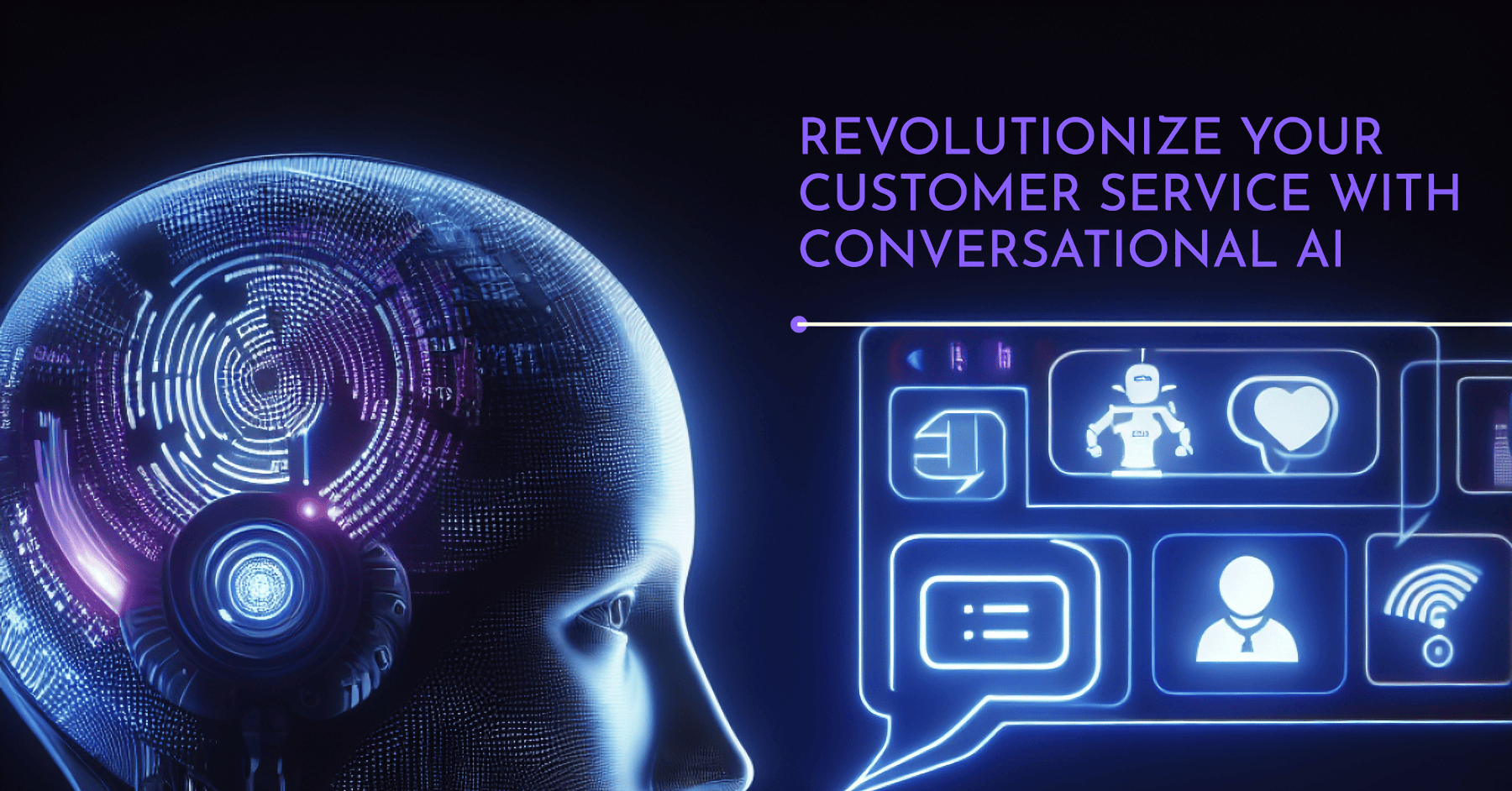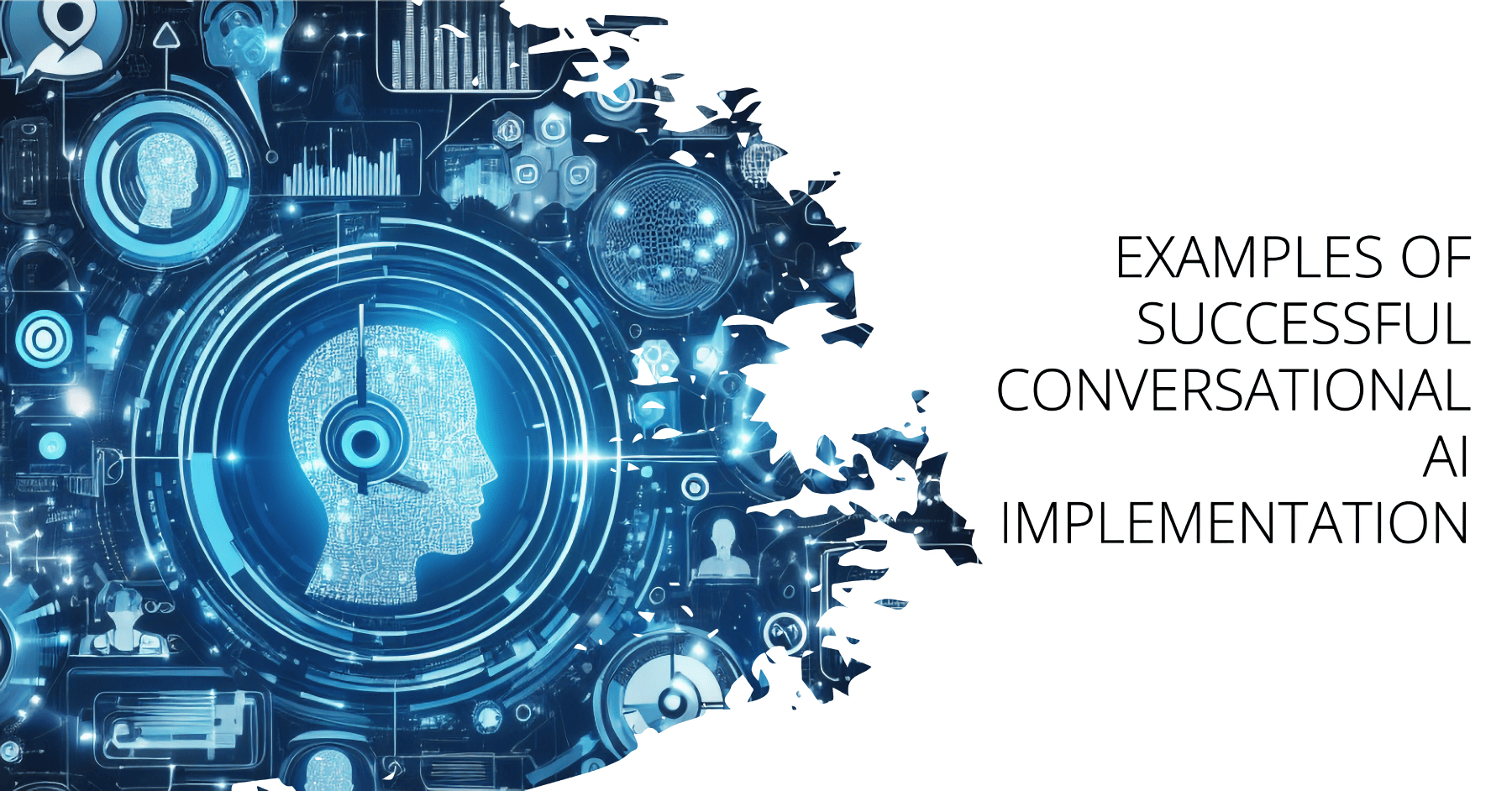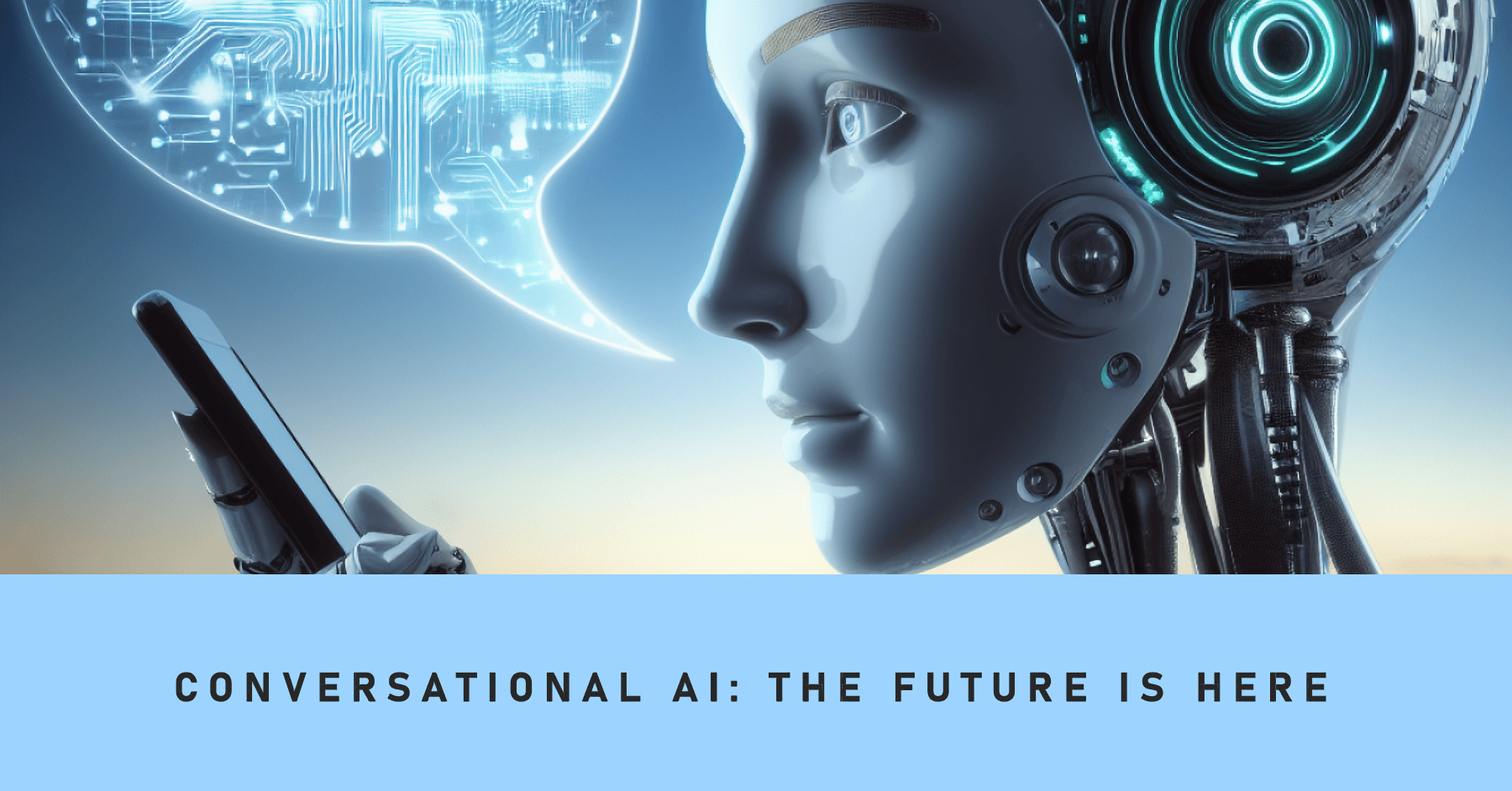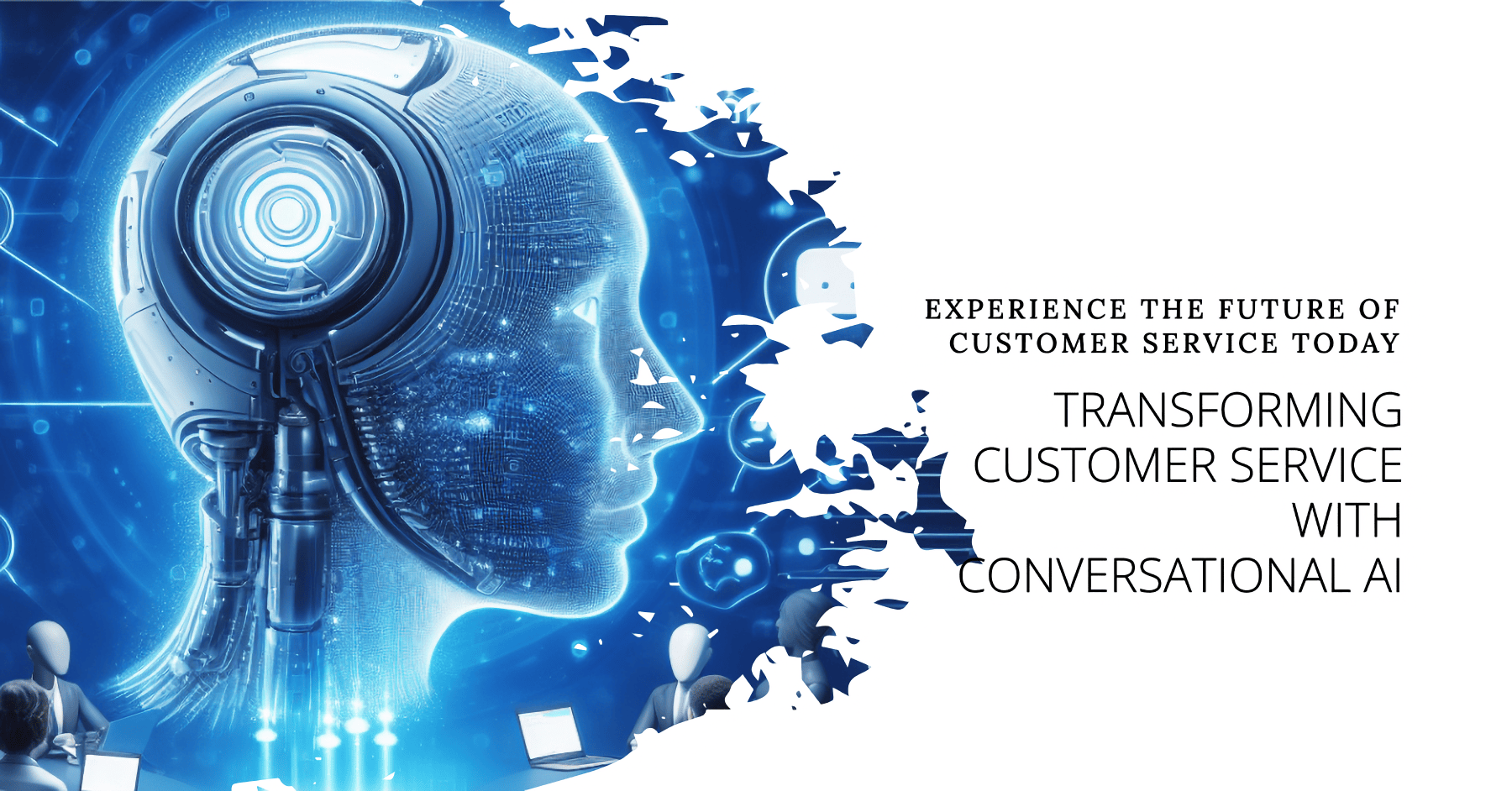Discover how conversational AI is transforming customer service, empowering businesses to provide a personalized, efficient, and scalable support experience that exceeds customer expectations.
The customer service landscape is rapidly evolving. Brands can no longer rely on traditional support channels to meet rising customer expectations. Today's consumers demand fast, personalized, and seamless experiences across every touchpoint.
Conversational artificial intelligence (AI) offers a solution. By automating repetitive tasks and enabling natural conversations, conversational AI allows brands to scale their customer service while delivering more human-like interactions.
According to IDC, over 50% of large enterprises will leverage conversational AI for customer service by 2025. As more businesses follow suit, conversational AI will soon become integral to customer experience.
What is Conversational AI?
Conversational artificial intelligence refers to advanced software systems that can simulate human-like conversations using speech or text. Key capabilities include:
Natural Language Processing (NLP)
This AI subfield focuses on enabling machines to comprehend, interpret, and generate human languages. NLP techniques allow systems to analyze speech or text to extract meaning, intent, sentiment, and context.
Specific NLP components that empower conversational AI include:
Natural Language Understanding (NLU): Extracts intents and entities to determine meaning and context behind phrases
Natural Language Generation (NLG): Formulates responses translating internal data into conversational language
Sentiment Analysis: Detects emotion like frustration, satisfaction, urgency etc. to shape appropriate responses
Machine Learning Algorithms
ML algorithms apply statistical models allowing AI systems to improve over time by learning patterns from conversational data. As the system interacts with more customers, ML models further refine NLU performance.
Generative AI Models
Recently released large language models like GPT-3 are able to produce incredibly human-like conversational text. However, accuracy can be inconsistent. Combining fine-tuned ML and NLP provides more reliable enterprise-grade solutions.
Orchestration Layer
An orchestration engine combines the NLP, ML, and data components to determine optimal responses and conversation flows using business rules and analytics.
By unifying these key elements - NLP, ML, generative AI, and an orchestration engine - conversational systems can deliver flexible, natural, and human-like customer experiences through automation.
With robust conversational capabilities now possible, AI-powered chatbots, voice assistants, and avatars are transforming customer service and engagement for global brands.
Key Components of Conversational AI
Component | Description |
Natural Language Understanding (NLU) | Converts text or audio into structured data by extracting meanings and intents |
Natural Language Generation (NLG) | Generates natural language responses based on internal logic and data |
Dialogue Manager | Determines optimal responses and conversation flows based on context |
Knowledge Base | Database containing organizationâs information used to answer queries |
Machine Learning Models | Continuously trains system to understand language and respond more accurately |
Table: Key components of conversational AI systems
By combining these elements, conversational AI systems can dynamically understand requests and respond based on business goals, resources, and defined parameters.

Benefits of Conversational AI for Customer Service
Intelligent conversational interfaces deliver numerous benefits that empower brands to reinvent their customer service function:
1. 24/7 Availability and Improved Issue Resolution Times
Conversational AI enables always-on customer service through automated self-service options. Chatbots and voice assistants resolve common repetitive inquiries instantly without wait times. This significantly improves issue resolution speeds.
As per Gartner, conversational AI handles 80% of repeat customer requests, with over 50% of issues solved in under 5 minutes. Resolution times can improve by 40% or more.
2. Enhanced Personalization of Experience
Sophisticated NLP capabilities allow conversational AI to interpret customer data and previous interactions to deliver personalized responses. Adaptive ML models further refine and tailor dialogue based on individual user profiles and behaviors.
Personalized experiences build stronger brand connections, with 72% of customers more likely to engage with tailored content per Episerver research.
3. Deeper Customer Insights
By automatically logging and analyzing every customer conversation, conversational AI solutions uncover detailed customer behavior insights. Historical interaction data reveals rising trends, common pain points, churn risks and upsell opportunities.
These richer analytics around the customer journey empower smarter marketing, product and service decisions.
4. Optimized Contact Center Operations
Conversational AI streamlines contact center functions through automated handling of high-volume repetitive inquiries. This allows human agents to focus on priority issues and complex customer needs better suited for a "human touch".
As per IBM, routing lower-value customer calls to AI frees up to 30% more contact center capacity. Agents can provide more consultative value-added services.
In summary, leading brands leverage conversational AI as a strategic capability to drive superior, scalable customer experiences while optimizing support operations and gaining customer intelligence.
Common Use Cases for Conversational AI in Customer Service
Conversational AI streamlines a myriad of customer service and engagement scenarios, including:
1. Automated FAQ and Information Delivery
Chatbots provide consistent 24/7 automated responses for frequently asked customer questions. This could cover common inquiries on store locations, return policies, account setup steps and more.
With NLP understanding queries in natural language, customers simply ask questions rather than navigating FAQ lists.
2. Order Status Updates and Tracking
Integrations with order management systems allow conversational AI to retrieve details on shipment statuses, expected delivery date/time, courier tracking links, and more. Customers can instantly get updates.
Read: How to build ai knowledge base management system.
3. Product Recommendations and Cross-Sells
Based on individual purchase history and behaviors, chatbots identify and recommend products likely to meet customer needs or prompt potential cross-sell opportunities.
4. Appointment Scheduling and Reminders
Conversational AI chatbots help customers book service appointments or schedule callback requests from human agents. Once appointments are scheduled, AI can automatically send reminder notifications as well.
5. Lead Generation and Event Promotion
Analyze site visitor behaviors and initiate proactive chat conversations to convert potential leads. Also promote and book relevant upcoming webinars or events based on customer attributes.
In conclusion, conversational AI creates value across the entire customer lifecycle - from acquisition to retention and everything in between. The use cases are continually expanding given rapid innovations in underlying AI capabilities.

Examples of Successful Conversational AI Implementation
Organizations across industries are achieving tremendous value by deploying conversational AI to transform customer and employee experiences:
Automotive - Toyota
Toyota utilizes AI-powered chatbots to handle a majority of customer inquiries. The bots manage over 2 million conversations monthly, improving response rate by 60% and resolution rate by 20%. Call volume also lowered by 400,000+ calls annually.
Telecom - AT&T
The AT&T virtual assistant handles over 6 million interactions per month, covering things like account access, payment arrangements, data usage insights and device troubleshooting. Their AI helped customers save 28 million total hours in 2020.
Healthcare - Cigna
Cigna introduced conversational AI to handle customer and healthcare provider inquiries 24Ã7. Their chatbot Erica now processes 40% of all call, click and chat volumes. Erica also boosted customer satisfaction scores to 95%.
Financial Services - HSBC
HSBC leverages chatbots on Facebook Messenger and their mobile app to address over 200 banking transaction types. Their Singapore chatbot serves 50% of all web traffic and helped reduce calls by 30%.
Retail - 1-800 Flowers
Leading flower retailer 1-800 Flowers integrated conversational commerce across web, mobile and social channels. Their bot Amy has handled 3 million+ customer interactions, leading to 10% revenue growth.
As shown above, global leaders across sectors are leveraging advanced conversational AI capabilities to operate customer support functions with greater efficiency and intelligence - while delivering superior experiences.
Strategies for Implementing Conversational AI
Companies can leverage these proven strategies to ensure successful planning, launch and optimization of conversational AI customer service solutions:
Identify High Value Opportunities
Analyze historical customer interactions and journeys to pinpoint pain points where conversational AI can add most value. Common opportunities include lowering wait times, automating repetitive inquiries or providing 24/7 self-service options.
Develop Robust Knowledge Bases
Structure knowledge centered on high-value customer questions. Integrate databases like FAQs, product specs, support documentation etc. Rich knowledge is key for conversational AI to deliver accurate answers.
Start Small, Continuously Test and Improve
Run small-scale pilot projects focused on high-demand use cases before company-wide launch. Gather ongoing feedback through surveys and real user testing to enhance performance.
Closely Monitor KPIs
Define key metrics aligned to goals - e.g. call volume, handle times, escalations, issue resolution rates, CSAT scores - and rigorously monitor through dashboards. Continuously optimize based on data insights.
Ensure Responsible AI Practices
Train conversational AI responsibly using unbiased data that meets ethical standards. Maintain humans in the loop via monitoring and sanity checks. Ensure transparency by informing users when communicating with AI.
Choose the Right AI Software Platform
Assess vendor solutions across essential criteria - NLP accuracy, security protocols, pace of innovation, ease of use, scalability infrastructure and integration capabilities with existing MarTech stacks.
By following structured implementation strategies focused on driving customer value responsibly, brands can transform support functions through trusted, intelligent conversational experiences.

The Future of Conversational AI
While conversational AI is already reinventing customer service today, innovations in underlying technologies will unlock even smarter applications:
More Human-Like Conversations
With neural networks better mimicking human cognition, future chatbots can handle nuanced dialogues - understanding ambiguity, processing context/symbolism, demonstrating emotional intelligence and managing complex multi-party conversations.
Seamless Cross-Channel Personalization
Centralized customer intelligence platforms will enable consistent personalized journeys across any touchpoint - web, mobile, voice assistants, IoT devices or more.
Deeper Integration Across Business Systems
As APIs and microservices mature, conversational AI will achieve seamless data exchange across CRM, ERP, analytics, and other enterprise platforms - enabling holistic customer understanding.
Democratization of Conversational AI Creation
No-code solutions will empower non-technical teams to easily build sophisticated conversational workflows with minimal IT dependency - drastically accelerating development.
Enhanced Human-AI Collaborations
The future of conversational AI will be defined by symbiotic partnerships between AI and humans. AI will augment support staff for superior joint performance vs pure automation alone.
With rapid advances, conversational AI is poised to become an integral platform enabling enterprises to engage customers through intelligent and personalized dialogue across the entire customer lifecycle.
Ensuring Responsible AI Practices
While conversational AI unlocks immense possibilities, businesses must implement solutions responsibly by:
Being Transparent On AI Use
Inform consumers when they are communicating with a bot versus human agent. Set proper expectations on AI capabilities.
Providing Option for Humans
Customers should be able to switch from interacting with the AI personal assistant to a live agent on demand. Make it easy to connect to humans.
Closely Monitoring AI Interactions
Have staff oversee a sample of AI conversations to check quality and accuracy. Rapidly resolve inconsistencies and errors.
Soliciting Continuous Feedback
Actively gather customer input on AI interactions through surveys, reviews and interviews. Identify areas of improvement via feedback analytics.
Safeguarding Customer Information
Implement adequate data security protections on par with human agents. Limit data collection and access only on a need-to-know basis.
Auditing for Fairness
Proactively audit AI systems for algorithmic bias or unfair outcomes. Course-correct models where needed.
Getting Started with Conversational AI
Interested organizations can follow these steps for easy deployment of conversational AI capabilities:
Identify Opportunities to Add Value
Analyze customer journey pain points addressable through new self-service options or improved query handling.
Determine Required Resources
Assess gaps in skills, technology needs and budget required for AI solutions. Develop resourcing plan.
Explore Conversational AI Software Platform Options
Research vendors with robust enterprise-grade solutions. Prioritize NLP accuracy and sophisticated orchestration engine.
Start Small with Pilot Project
Launch conversational AI for limited groups of clients and interactions. Continuously test and refine until satisfactory capability maturity.
Expand Across Organization
With successful small-scale demonstration, incrementally broaden availability of AI chatbots or voice bots across channels and customer groups.


